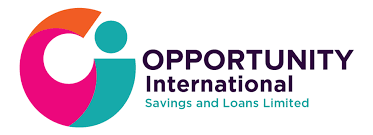Group Leader Support and Financial Technology Adoption: Evidence from Mobile Banking in Ghana

Researchers partnered with IPA Ghana and Opportunity International Savings and Loans to conduct a randomized evaluation to measure whether individual incentives and group leader support among microfinance groups influence mobile banking adoption and encourage savings in formal financial institutions. While individual incentives increased mobile banking adoption by 50 percent, adding support through trained leaders doubled adoption rates and increased savings in formal bank accounts by 30 percent six months later.
In low- and middle-income countries, accessing traditional banking services remains a major challenge, especially for rural populations who have to travel long distances to reach banks. In Ghana, the average 50-minute journey to the nearest bank discourages many from using their accounts, highlighting a significant barrier to financial inclusion.1 Mobile banking offers a promising solution by allowing remote account access through phones, reducing these costs. Yet despite widespread mobile phone ownership, mobile banking adoption rates remain low due to various barriers, including insufficient knowledge, security concerns, high learning costs, and low confidence in digital transactions. Previous research suggests that while one-time incentives can encourage people to try new technology, those less familiar with digital services often need additional support.2 Trusted community members can help spread new technology by sharing knowledge demonstrating its use, and leveraging existing group structures—such as microfinance groups—offers a promising alternative.3
Researchers partnered with IPA Ghana and Opportunity International Savings & Loans—a microfinance institution in Ghana—to conduct a randomized evaluation to assess whether a small, one-time monetary incentive for trying out mobile banking is sufficient to encourage the adoption and sustained usage of digital financial services. Additionally, they examined whether having a group leader endorse the new technology boosted adoption and usage. The intervention involved 400 women from 115 female microfinance groups in rural Ghana. The microfinance groups were randomly assigned to one of the following groups:
- Incentive: Women received a one-time monetary incentive (USD 1.66) for using mobile banking within one month, along with information on how to use the service.
- Endorsement: Women received the one-time incentive while group leaders were offered a monetary reward for each group member who completed a mobile banking transaction within one month. The group leaders received intensive mobile banking training and were instructed to train the other group members.
- Comparison: Women received no encouragement but could use mobile banking if desired.
Combining small incentives with group leader support in microfinance groups doubled mobile banking adoption rates and increased savings. The Incentive approach doubled mobile banking adoption, increasing usage by 15 percentage points compared to the 10 percent adoption rate in the comparison group. The Endorsement approach proved even more effective, increasing mobile banking usage by 27 percentage points and bank savings by 28 percent (48 cedis/USD 3.25). These effects persisted six months later, with the Endorsement approach maintaining double the adoption rate of the comparison group and increasing formal savings account balances by 30 percent.
Several key factors can explain this stronger impact of the Endorsement approach. It improved knowledge of mobile banking, increased confidence in preventing fraud and conducting secure digital transactions, and strengthened interactions and assistance with mobile banking within the group. In both arms, adoption was significantly higher—by 37-54 percentage points—where leaders adhered to training or had prior experience.
Sources
1 Demirguc-Kunt et al., "The Global Findex Database 2022" (2022). ; Asli Demirgüç-Kunt, Leora Klapper, Dorothe Singer, and Saniya Ansar. 2022. The Global Findex Database 2021. World Bank Publications.
2 Meriggi, Niccolò F., Erwin Bulte, and Ahmed Mushfiq Mobarak. 2021. “Subsidies for Technology Adoption: Experimental Evidence from Rural Cameroon.” Journal of Development Economics 153 (November): 102710. https://doi.org/10.1016/j.jdeveco.2021.102710.
3 BenYishay and Mobarak, "Social Learning and Incentives for Experimentation and Communication" (2019); Beaman et al., "Can Network Theory-Based Targeting Increase Technology Adoption?" (2021)
Implementing Partner













